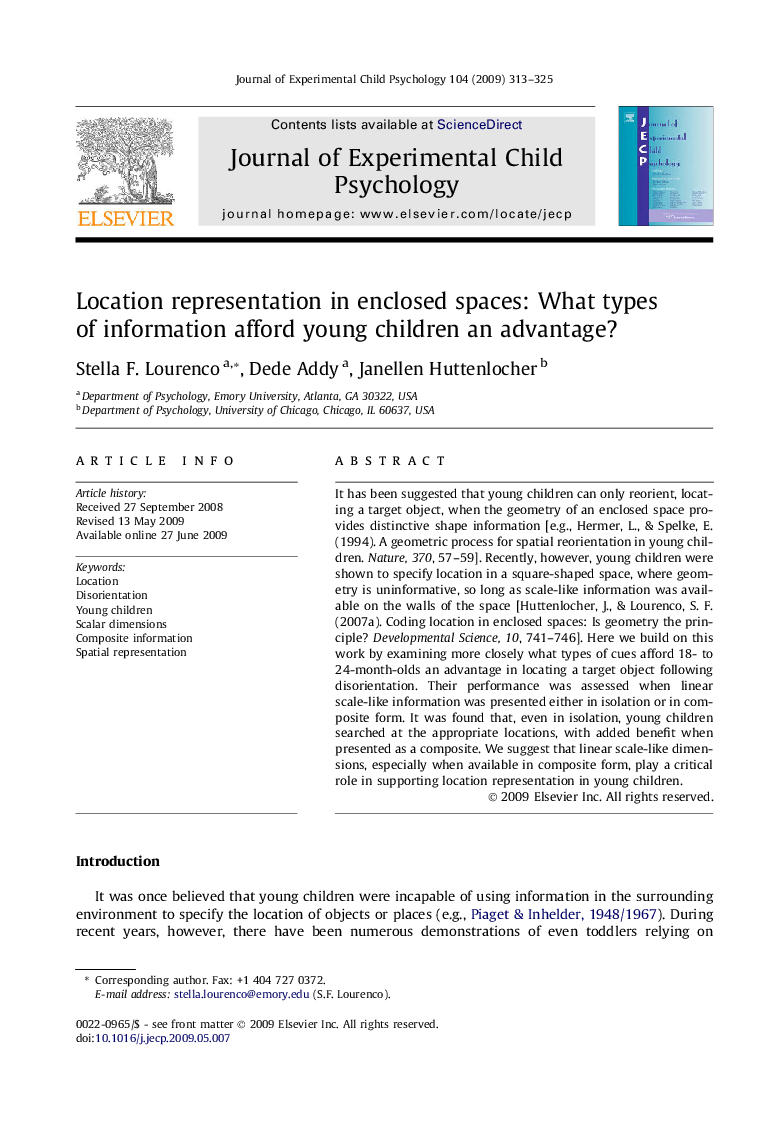| Article ID | Journal | Published Year | Pages | File Type |
|---|---|---|---|---|
| 918605 | Journal of Experimental Child Psychology | 2009 | 13 Pages |
It has been suggested that young children can only reorient, locating a target object, when the geometry of an enclosed space provides distinctive shape information [e.g., Hermer, L., & Spelke, E. (1994). A geometric process for spatial reorientation in young children. Nature, 370, 57–59]. Recently, however, young children were shown to specify location in a square-shaped space, where geometry is uninformative, so long as scale-like information was available on the walls of the space [Huttenlocher, J., & Lourenco, S. F. (2007a). Coding location in enclosed spaces: Is geometry the principle? Developmental Science, 10, 741–746]. Here we build on this work by examining more closely what types of cues afford 18- to 24-month-olds an advantage in locating a target object following disorientation. Their performance was assessed when linear scale-like information was presented either in isolation or in composite form. It was found that, even in isolation, young children searched at the appropriate locations, with added benefit when presented as a composite. We suggest that linear scale-like dimensions, especially when available in composite form, play a critical role in supporting location representation in young children.
